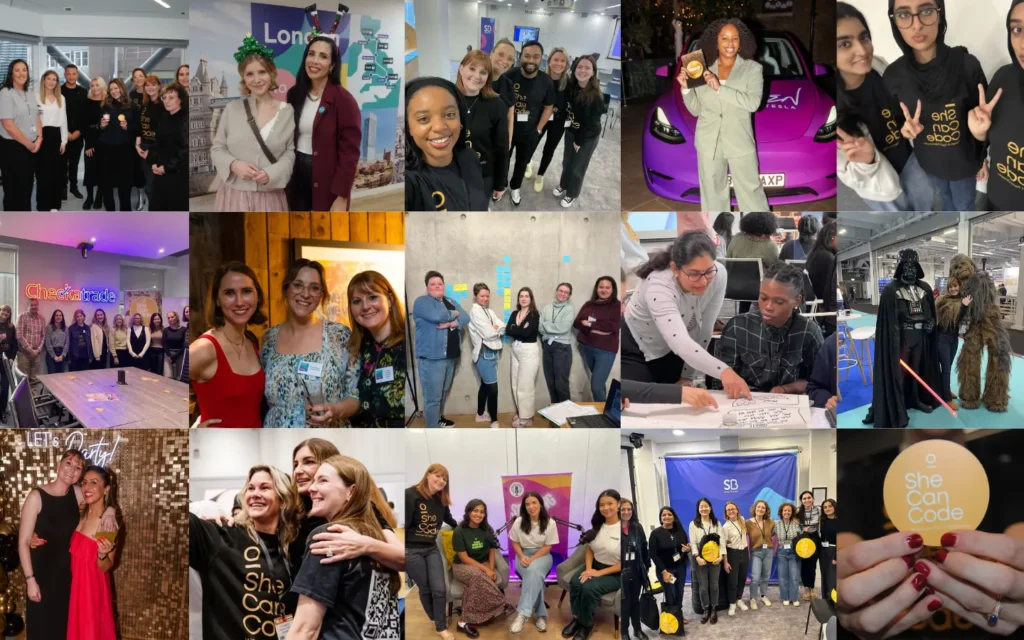With more than 25 years of experience in UX and design, Shelley has a demonstrated track record of building and leading successful design organizations. She is currently VP User Experience & Design at Finastra, having previously worked at NCR, and on various Xbox projects at Microsoft.

Her in-house focus is on developing a culture of creativity and innovation, leveraging design thinking to create value through new mindsets and processes, strengthening customer relationships and driving product innovation.
Shelley will look at how digital transformation can be used to bring more diversity to an organisation; the challenges and solutions of diversity in digital transformation; and how design teams can mitigate these challenges.
CUSTOMERS TODAY DEMAND PERSONALISED ENGAGEMENT AT EVERY TOUCHPOINT—WHETHER IN PERSON, ON THE PHONE, A SMART DEVICE, OR A LAPTOP.
Personalisation is best delivered through digital channels and technology that enables organisations to create tailored experiences for each customer. An organisation’s capabilities around the level of personalisation delivered depends on how well it can meet the diverse needs of individuals. Increasingly, this means prioritising diversity, equity, and inclusion (DE&I) in the development and delivery of products and services—and, by extension, digital transformation (DX) strategies.
Alongside DX, organisations will have to undergo a cultural transformation. Consumers brought forth the requirement for more accessible products and services, so it only makes sense that businesses should also adopt more inclusive internal practices and technologies to enhance employee experience.
In theory, the digital space should be open for all, yet when something as simple as a smartphone form factor can be exclusionary, it’s crucial that design steps in to aid in making products and services more inclusive. Not being inclusive has the potential to turn away 1 in 5 of an organisation’s potential talent pool, as well as customers. The organisations that understand this the best and adopt a diverse thinking in their DX strategies, will see this effort returned in engagement and ROI.
DIVERSITY STARTS AT THE ROOT
With higher levels of accessibility for wheelchair users and better understanding of those with neurodiversity, accessibility when it comes to physical space is better than ever. However, not enough is being done in the digital space. With over 63% of the world’s population on the internet, and the average person online for seven hours each day, digital channels are clearly a major part of people’s lives. Of the UK’s population, there are over 4.8 million people classed as disabled, including those with physical disabilities and neurodiverse conditions, in employment as of March this year. Organizations need to see this and adapt their understanding through the lens of different accessibility viewpoints, in order to reach and cater to this ever-expanding audience.
The digital space can be especially difficult to navigate for those classed as neurodiverse. People with neurodivergent conditions process information, think, act and engage with the world differently to those who are neurotypical. This includes those on the autism spectrum, with color blindness or dyslexia. The online world is an overwhelmingly visual space full of information, images and stimuli presented in a kaleidoscope of formats. This can be overwhelming to the neurodivergent.
If employers are expected to make reasonable adjustments for those with a disability in the physical office, the same should be mirrored for the digital workplace. Tools such as video magnifiers, braille display and speech to text solutions—which are easy to implement—should be included as standard in the workplace. This will make accessibility to web and mobile applications easier for employees and can even increase their motivation and productivity.
THE DIGITAL GENDER GAP
A recent study by the World Wide Web Foundation found that there is an estimated 33% overall female representation in the technology industry. Men are also 21% more likely to be online than women globally, rising to 52% in the least developed countries. This results in a serious lack of opportunities, skills and a fear of discrimination that prevent many women from engaging in the digital world.
The implications for women when it comes to digital transformation is that their needs are far less likely to be considered in the adoption and implementation of new work-related tools and platforms, as well as customer-facing digital products and services. Without a concerted effort to increase representation in the DX process, there will be fewer voices advocating for products and tools to be designed with women in mind, leading to more than half the world’s population being increasingly underserved in the digital sphere.
The organisation that has the most successful DX strategies, will have design teams that understand the importance of inclusive digital tools and the challenges faced by different groups. They will then naturally create the tools that make the lives of all users easier. A DX strategy that prioritises diversity will not only improve employee experience, it’s effects will also translate to an organisation’s customer-facing products and services.
A diverse team brings a wider perspective that only elevates the end products and solutions. Aside from the ethical benefits of including features that prioritise accessibility, there are clearly financial rewards when it comes to providing products and services for as broad a range of customers as possible.








